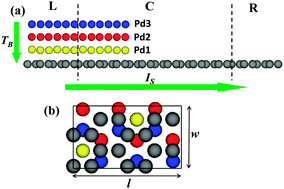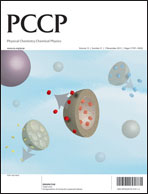A theoretical model for metal–graphene contact resistance using a DFT–NEGF method
Abstract
The contact resistance (Rc) between graphene and metal electrodes is of crucial importance for achieving potentially high performances for graphene devices. However, previous analytical models based on Landauer's approach have failed to include the Fermi velocity difference between the graphene under the metal and the pure graphene channel. Hereby we report a theoretical model to estimate the Rc using density-functional theory and non-equilibrium Green's function methods. Our model not only presents a clear physical picture of the metal–graphene contacts, but also generates Rc values which are in good agreement with the experimental results: 210 Ω μm for double-sided Pd contacts compared with 403 Ω μm for single-sided Pd contact.


 Please wait while we load your content...
Please wait while we load your content...